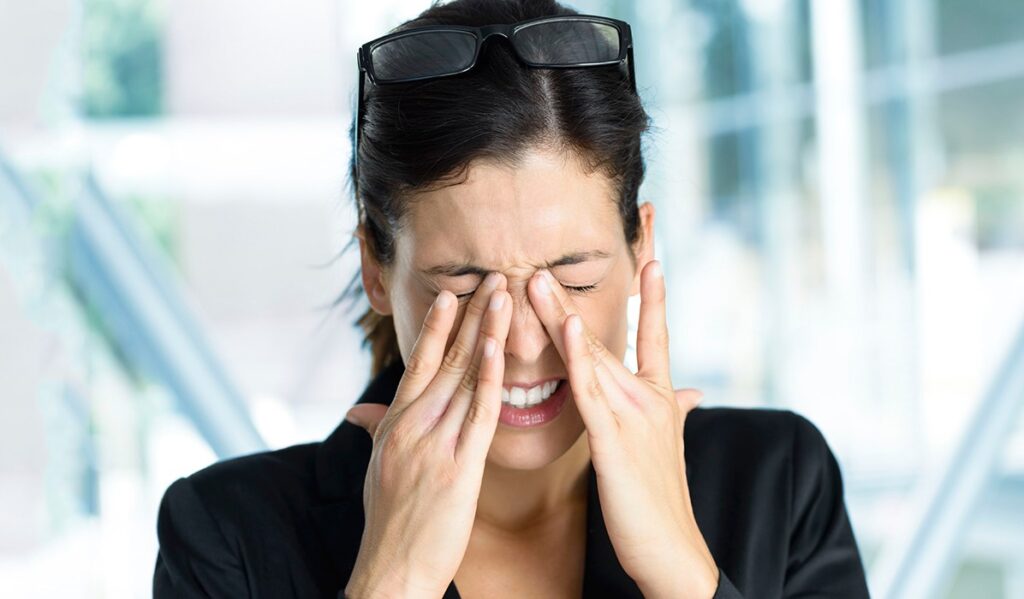Do you often find yourself rubbing your eyes or reaching for eye drops to relieve discomfort? While eye allergies and dry eye share similar symptoms, such as itching, redness, and irritation, they stem from different causes and require distinct treatments. Understand the differences between eye allergies and dry eye, explore their unique characteristics, and discuss effective treatments to help you find relief and restore comfort to your eyes.
Understanding Eye Allergies
Eye allergies, also known as allergic conjunctivitis, occur when your immune system reacts to allergens, such as pollen, dust mites, pet dander, or mold spores. When exposed to these allergens, your body releases histamine and other inflammatory chemicals, leading to symptoms like itching, redness, tearing, and swelling. Eye allergies are often seasonal, triggered by changes in outdoor allergen levels, but they can also be perennial, occurring year-round due to indoor allergens.
Understanding Dry Eye
Dry eye, on the other hand, occurs when your eyes do not produce enough tears or when the quality of your tears is compromised, leading to insufficient lubrication and moisture on the ocular surface. Factors such as aging, hormonal changes, environmental conditions, medication use, and certain medical conditions can contribute to the development of dry eye. Common symptoms of dry eye include dryness, burning, stinging, a gritty sensation, and intermittent blurry vision.

Differentiating Between Eye Allergies and Dry Eye
While eye allergies and dry eye may share similar symptoms, several key differences can help you distinguish between the two:
- Onset and Duration: Eye allergies typically have a sudden onset and are often seasonal, occurring in response to specific allergens during certain times of the year. In contrast, dry eye symptoms may develop gradually and persist over time, regardless of allergen exposure.
- Symptoms: While both conditions can cause itching, redness, and irritation, eye allergies are often accompanied by watery eyes and may be associated with other allergic symptoms, such as sneezing, nasal congestion, or a runny nose. In contrast, dry eye symptoms may include a sensation of dryness, burning, or a gritty feeling, with less tearing and more persistent discomfort.
- Triggers: Eye allergies are triggered by exposure to allergens, such as pollen, pet dander, or mold spores, whereas dry eye symptoms may worsen in response to environmental factors like wind, smoke, or dry air, as well as activities that require prolonged visual concentration, such as reading or using digital devices.
Effective Treatments for Eye Allergies and Dry Eye
Now that we’ve clarified the differences between eye allergies and dry eye, let’s explore some effective treatments for each condition:
Eye Allergies
- Anti-Allergy Eye Drops: Over-the-counter anti-allergy or prescription antihistamine eye drops can provide quick relief from itching and redness by blocking the action of histamine.
- Mast Cell Stabilizers: These eye drops work by preventing the release of histamine and other inflammatory chemicals from mast cells, helping to reduce allergic reactions.
- Cool Compresses: Applying cool compresses to closed eyes can help soothe irritation and reduce swelling associated with eye allergies.
Dry Eye
- Artificial Tears: Over-the-counter artificial tear drops, like Optase Intense, can help lubricate the eyes and provide relief from dryness and discomfort.
- Prescription Eye Drops: Prescription medications, such as cyclosporine eye drops, may be prescribed to reduce inflammation and improve tear production in cases of moderate to severe dry eye. These work very well but tend to be needed long-term.
- Advanced Heat Therapy: Newer technology using the intense pulsed light (IPL) or radiofrequency (RF) heat is available to reduce chronic inflammation and obstruction of the eyelids and promote normal and healthy tear production.
While eye allergies and dry eye may share similar symptoms, they stem from different causes and require tailored treatments to provide relief. By understanding the distinctions between these two conditions and seeking appropriate care from an eye doctor at Optical Illusions, you can effectively manage your symptoms and enjoy clearer, more comfortable vision. Whether you’re battling seasonal allergies or struggling with persistent dryness, don’t let eye discomfort hold you back from living your best life. Reach out to the team at Optical Illusions today to evaluate your eye health and learn more ways to increase your eye comfort.




